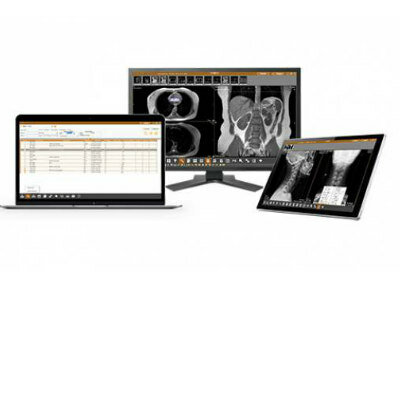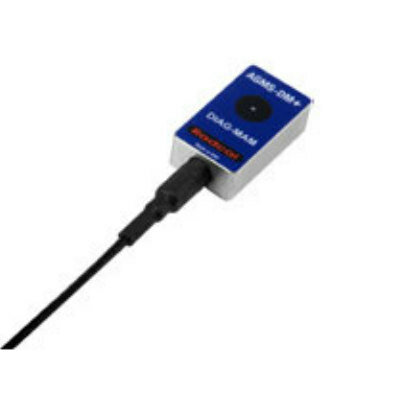MRI Scans Can Predict Effects of Multiple Sclerosis Flare-Ups on Optic Nerve
By MedImaging International staff writers
Posted on 19 Jan 2009
One of the most sinister features of multiple sclerosis (MS)--its pure unpredictability--may finally be starting to yield to sophisticated medical imaging techniques. Posted on 19 Jan 2009
Researchers from Washington University School of Medicine in St. Louis (MO, USA) reported online on December 10, 2008, in the journal Neurology that an approach known as magnetic resonance (MR) diffusion tensor imaging (DTI) allowed them to estimate three months in advance the chronic effects of inflammation of the optic nerve. The disorder occurs most frequently as a result of MS, a neurodegenerative condition that can present with a very wide variety of symptoms that range from vision loss and other sensory damage to muscle weakness, plasticity, or paralysis to depression, sleep loss, or incontinence.
"We see this as part of a battery of tests we hope to give patients within the next decade to help our clinical assessment and tailor it to an optimal treatment,” stated lead author Robert T. Naismith, M.D., assistant professor of neurology and a staff physician at Barnes-Jewish Hospital (St. Louis, MO, USA). "It may also help further refine our basic understanding of MS in terms of expanding our insights into where and how damage occurs and why it can affect patients differently.”
Scientists believe MS results from misdirected immune system attacks against the nervous system. Symptoms occur in episodes that vary unpredictably in nature, severity, duration, and frequency. Symptoms of optic nerve inflammation, known as optic neuritis, include loss of vision, blurring, or fogginess and pain in the affected eye.
Regular MRI scans can detect optic neuritis but offer no data on its severity and potential lasting consequences for a patient's vision. Currently in use clinically to detect and follow-up on strokes, DTI uses a rapid series of MRI scans to track water diffusion in tissue. Noting that inflammation and the cell damage it causes would likely alter water diffusion in the affected tissues, Dr. Naismith and his colleagues hypothesized that this information might allow them to assess the severity and potential for lasting damage of MS flare-ups.
Over the past five years, the new study's senior authors, Sheng-Kwei Song, Ph.D., associate professor of radiology, and Anne Cross, M.D., professor of radiology, did much of the quantitative work in animal models of MS. The new data, based upon this successful collaborative history, are the first to demonstrate that DTI can produce potentially useful predictive information in humans.
For the study, researchers used DTI to image the optic nerves of 12 healthy volunteers, 12 patients who had begun to suffer from optic neuritis within the past month, and 28 patients with a history of earlier outbreaks. They gave participants with optic neuritis or a history of it, detailed assessments of their visual health, including tests of visual acuity and for the thickness and conductivity of their optic nerves.
In the healthy individuals, DTI scans showed that the water diffusion along the length of the subjects' optic nerves, a characteristic known as axial diffusivity, averaged approximately 1.66 micrometers squared per millisecond. In three patients with acute optic neuritis, those levels went down as much as 0.45 micrometers squared per millisecond.
"As the inflammation breaks down the structure of the axons or branches of the optic nerves, the normal water diffusion in this direction is impeded,” Dr. Naismith explained. "After several months, though, the debris is cleared away, and this value and another characteristic known as radial diffusivity then start to increase.”
In acute patients, the initial decrease in axial diffusivity brought on by optic neuritis correlated with decreased sensitivity to visual contrast one month and three months later. In patients with a history of optic neuritis, the increase in radial diffusivity was a good predictor of lower scores on several tests of visual health. Scientists plan to evaluate the acute patients again one year after the onset of symptoms to see if the scan results continue to be predictive.
Researchers are currently working to expand the approach to assess MS attacks in the brain and spinal cord. "The optic nerve was our proof of concept, because it's structurally a very simple tract with all the nerves going one way, like a one-way street,” Dr. Naismith conlcuded. "The next step is taking the technique into the brain and spinal cord, where there are many different streets crossing. Measuring damage and correlating it to dysfunction will be more complex as a result.”
Related Links:
Washington University School of Medicine














